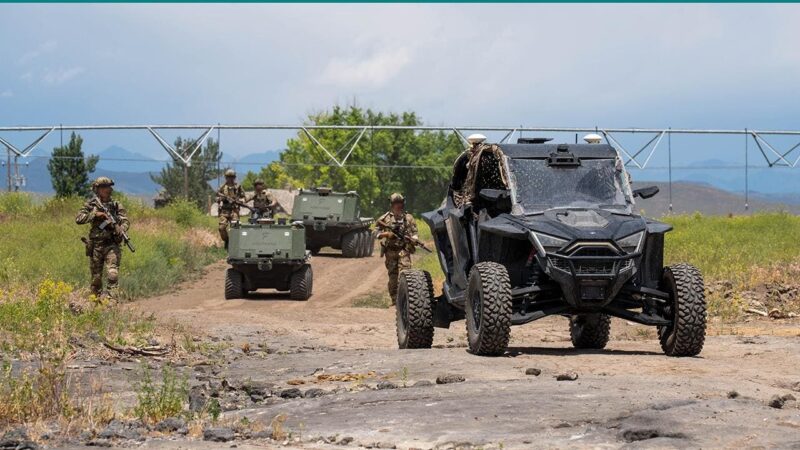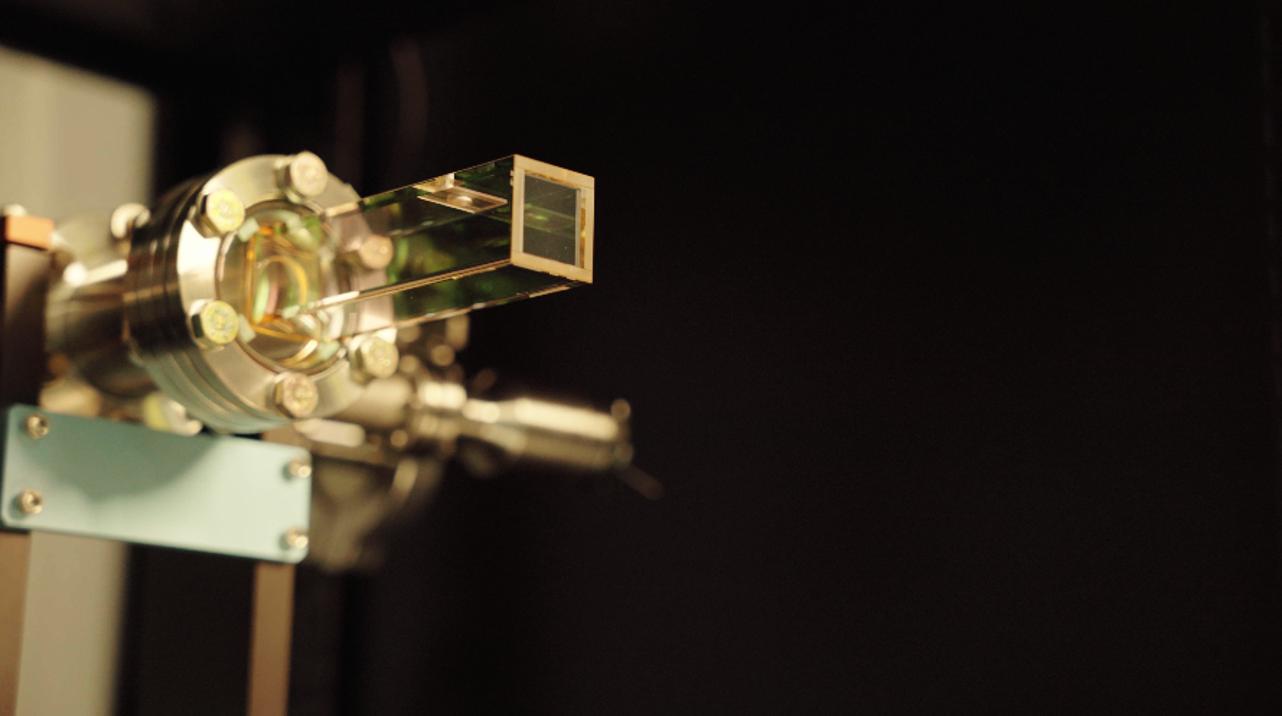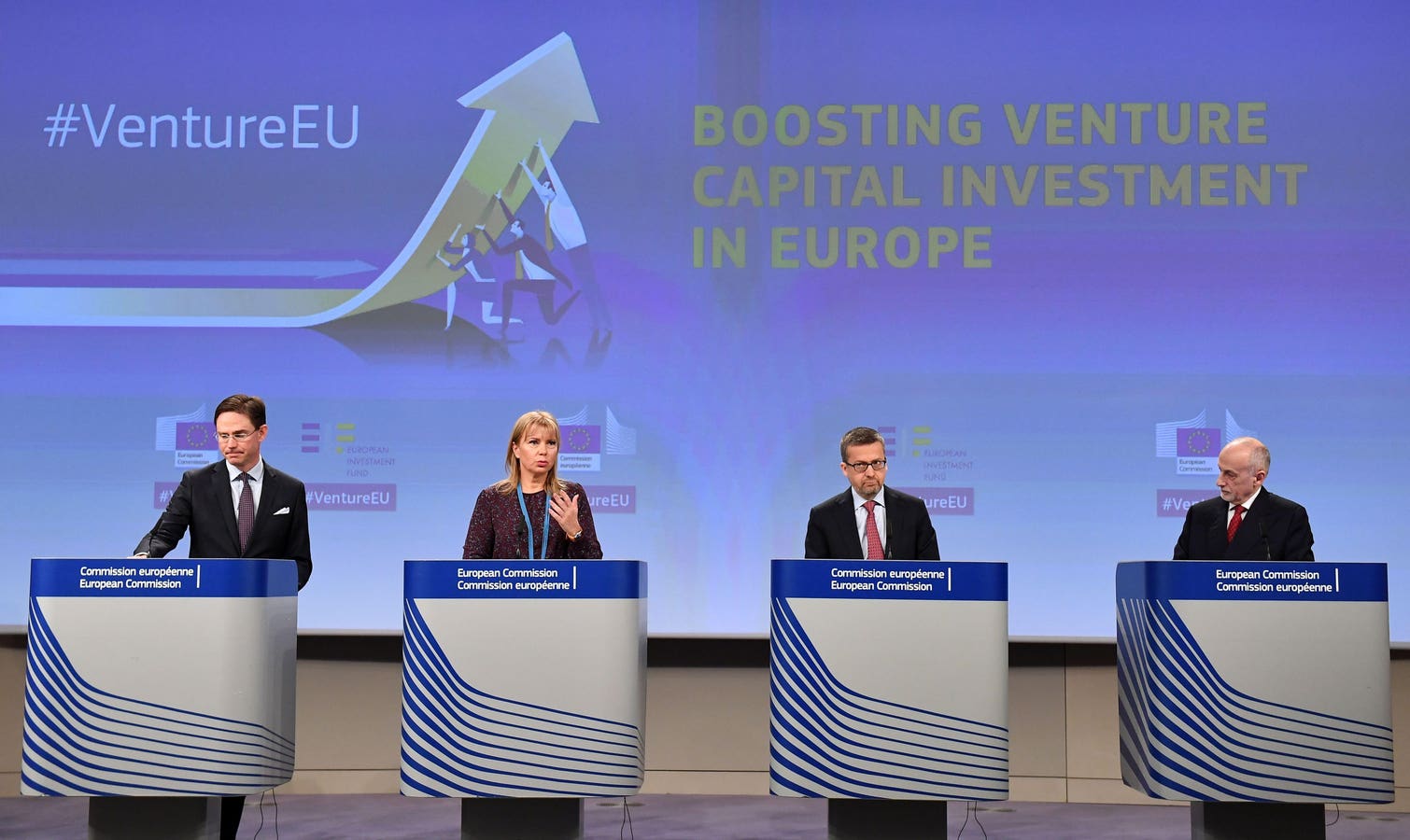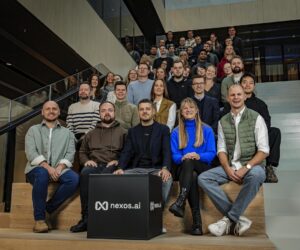Forterra’s Series C fundraise will support their dual military-commercial strategy, leveraging soldier support systems as shown here.
Forterra
When it comes to vehicle technology, defense needs and commercial logistics needs have historically had very little overlap. With a unique take on these domains, Forterra frames itself as “the company redefining autonomy and mission system interoperability for defense and logistics.” In this article, I’ll explore what this really means.
Forterra was founded as Robotic Research in 2002 and has been a key player in the development and deployment of ground autonomy systems in defense ever since then. The company is headquartered in Clarksburg, Maryland, just up the road from the U.S. Capitol.
Forterra delivers autonomous mission systems for defense, which entails an eclectic set of Operational Design Domains encompassing self-driving land systems to coordinated swarms of robotic systems and more. As framed by Forterra, the company “builds scalable, robust, mission critical hardware and software platforms that empower its customers to deploy autonomy as a force multiplier, extending reach, survivability, and effectiveness across the battlespace and industrial applications,” adding that its approach is “the operating standard for autonomy in the most complex, high-stakes environments.”
Forterra entered a new phase in their journey earlier this month, closing a $238 million Series C funding round consisting of equity and debt. The round was led by Moore Strategic Ventures, joined by new investors including Salesforce Ventures, Franklin Templeton, Balyasny Asset Management, 645 Ventures, Hanwha Asset Management, and 9Yards Capital, alongside participation from existing investors XYZ Venture Capital, Hedosophia, and Enlightenment Capital. Doubling down on their investment into Forterra, Crescent Cove provided both equity and debt, showing continued support since Forterra’s Series A in 2021.
“Autonomous systems are an operational imperative,” said Josh Araujo, CEO of Forterra. “This funding propels Forterra’s mission to be the connective tissue of modern operations. Our interoperable mission modules and autonomous stack are already enabling a new generation of platforms to move, sense and act without limits.”
Forterra’s fund-raising track record so far is notable. In 2021 the company raised a $228M Series A, which was succeeded by a $75M Series B round last year.
Forterra recently announced its acquisition of mobile mesh network company, goTenna, in addition to announcing a series of partnerships, including Volvo Defense, BAE Systems, CHAOS Industries, and RTX’s Raytheon.
The Commercial Play: Supporting On-Property Logistics
Forterra has forged a production relationship with vehicle manufacturer Kalmar which will result in new terminal tractors equipped with Forterra’s “AutoDrive” autonomous driving system. Kalmar’s Ottawa AutoTT™ is an autonomous terminal tractor designed to improve efficiency and safety in distribution centers, container terminals, and industrial yards. The AutoTT™ is currently undergoing its second round of testing as Kalmar moves closer to bringing it to market, with full production anticipated by 2026. The partnership between Kalmar and Forterra was established in early 2024.
Kalmar driverless terminal tractors powered by Forterra will come to market next year.
Forterra
What Are The Implications Of Pursuing Government and Commercial Markets In Parallel? Is It Wise?
Industry leaders have asserted that the combination of military contracts and commercial sales, using essentially the same autonomy technology, is powerful. How does this work in terms of revenues? In the case of Forterra, will current military contracts provide revenue “now” while waiting for AV yard truck sales volumes to scale up over several years? Or will both military and commercial revenues take years, such that venture funding is needed to keep the company solvent in the interim? How does investment fundraising interact with revenue from both military and commercial sales?
I posed these questions to Scott Sanders, Forterra’s Chief Growth Officer. “Defense and commercial programs move on different timelines but reinforce each other,” he said. “Defense contracts often generate revenue earlier by funding mission critical deployments and production programs, while also proving out the technology for broader use. Commercial sales, especially for autonomous yard trucks, take longer to build as production and customer adoption ramps up.” As he sees it, “Defense work can bring in revenue now, but both sides still require investment to scale. Fundraising bridges that gap until commercial volumes grow and the business reaches steady revenue across both markets.”
For perspective from the investment domain, I had a wide-ranging chat with James Cross, Co-Head of Private Investing at Franklin Templeton – Franklin Equity Group and Managing Director of Franklin Venture Partners, one of the key investors in the Forterra Series C fundraise. “We are thrilled to partner with Forterra as they build a category-defining company,” he said. Mr. Cross added that the fresh infusion of cash “will be used to expand Forterra’s product offerings in the communications and command and control space while also scaling production of edge compute offerings for defense applications.”
On the commercial side, Mr. Cross noted that “we’re here now” in fielding autonomy, after much skepticism over the last decade or so from potential end users and the public.
But having been an observer of U.S. Defense procurement over the last three decades, I’ve seen the powers-that-be going through numerous cycles of running hot, then cold, in terms of moving from R&D into deployable systems at scale. Not only that, but who knows what happens to funding and priorities when a new Presidential administration arrives?
The DARPA Challenges in the early 00’s were meant to super-charge the application of autonomy specifically for the military; the result was the launch of commercial autonomy powered by venture capitalists, while the Army itself trundled along at its usual pace.
Is it different now?
Mr. Cross pointed out a recent paradigm shift within the Army that creates the new opportunities for commercial autonomy providers.
Over many decades, the Army (in particular) has taken the role of specifying what systems they wanted and how they should be built, with waves of procurements awarded to a stable of defense contractors. This program management style did not leverage commercial developments in a significant way. “Now, we are at an inflection point,” Mr. Cross said. “There is now a desire within the Army to procure commercial off the shelf technologies, which is good for companies like Forterra.”
Compared to the Air Force and Navy, which innovate on new platforms, the Army can rapidly integrate autonomy by retrofitting its existing fleet of surface vehicles. The same can be said of the Marine Corps.
A human-driven military convoy is a complex endeavor, Mr. Cross said. “Drivers must be trained and certified. In certain settings, convoys can be completely automated; in others, autonomous ‘followers’ will support human-driven ‘leaders.’ In either scenario, there’s an opportunity to completely offset autonomy costs compared to human-driven convoys. More importantly, autonomy also helps to keep humans out of harm’s way.”
So rather than seeing military customers as an uncertain play, as I posited, Mr. Cross has a different view. “There is very little doubt about the tech anymore. For autonomy, we are seeing that military revenues are materializing quicker than commercial revenues,” he said. Clearly, this view underpins Franklin Templeton’s investment in Forterra.
Franklin Templeton is active broadly across the autonomy space, whether ground, air, or sea. Other autonomy investments include Applied Intuition, Saronic, and Anduril.
Defense Wins And Ongoing Programs
Forterra’s fresh round of funding comes on the heels of a string of contract wins for the company, including the first ground autonomy production contract with the DoD for ROGUE Fires with the Marine Corps, a $114M prime contract to deploy autonomous breaching systems for the Army, a Phase II award for the Army’s GEARS program focused on automating the Army’s heavy logistics fleet, and a $4.8M contract for the Army’s UxS Program.
A Promising New Era
Even if we’re in “a new era” as Mr. Cross noted, working in the military sector takes staying power and fortitude. There’s a lot cooking here for the autonomy players that can endure for the long run, while leveraging carefully selected commercial markets in parallel.
Disclosure: Richard Bishop is an Advisor to and/or an equity holder in the following companies mentioned in this article: Forterra.









